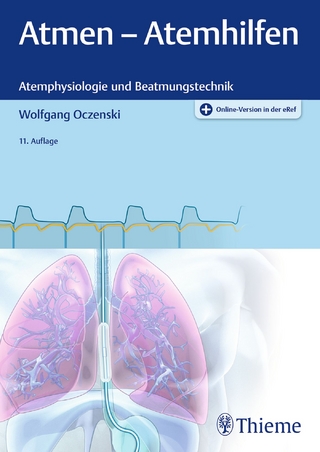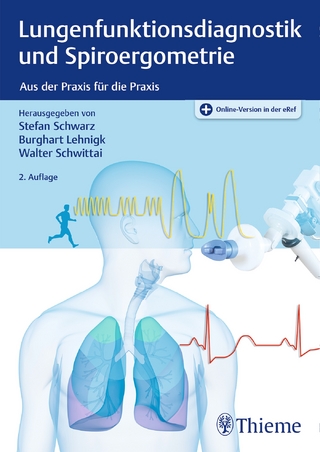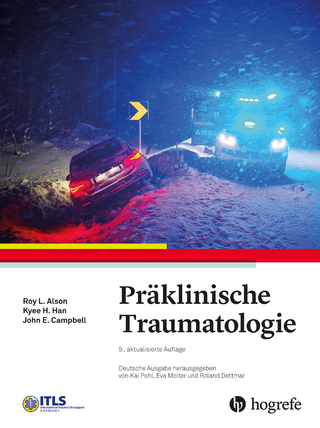Die Wirkung des Proteins Angiopoietin-like 4 auf physiologische Parameter in Lunge und Herz bei der Hypoxie-induzierten pulmonalen Hypertonie im Mausmodell
Seiten
2023
VVB Laufersweiler Verlag
978-3-8359-7118-9 (ISBN)
VVB Laufersweiler Verlag
978-3-8359-7118-9 (ISBN)
- Keine Verlagsinformationen verfügbar
- Artikel merken
Die pulmonale Hypertonie, vornehmlich die pulmonal arterielle Hypertonie (PAH), ist eine lebensbedrohliche Erkrankung des Lungengefäßsystems mit einem progressiven Verlauf. Durch eine dekompensierte Rechtsherzinsuffizienz im Endstadium der Erkrankung kommt es zum Tod des Patienten. Die Prognose ist schlecht, da ein Mangel kurativer Therapiemöglichkeiten vorherrscht. Im Rahmen klinischer und genetischer Studien konnten bestimmte Proteine identifiziert werden, die in einem möglichen Zusammenhang mit der PAH stehen. Eines dieser Proteine war das Angiopoietin-like 4 Protein (Angptl4). Das Angptl4 ist ein zirkulierendes Plasmaprotein, das mit den Angiopoietinen eine strukturelle Verwandtschaft aufweist. Es beeinflusst eine Vielzahl physiologischer und pathologischer Prozesse im Organismus. Die genauen Wirkungen von Angptl4 auf Lunge, Herz und Kreislauf sind jedoch weitestgehend unbekannt.
Das Versuchsvorhaben dieser Dissertation bestand aus zwei Teilversuchen. Zur Induktion der PAH wurde in beiden Teilversuchen das Hypoxie-Modell bei der Tierart Maus gewählt. Im ersten Teilversuch wurde ein rekombinantes Angptl4 über eine osmotische Minipumpe kontinuierlich verabreicht. Mit Hilfe bildgebender, hämodynamischer und histologischer Diagnostik konnten ein vaskuläres Remodeling in der Lunge, Veränderungen im Lungenparenchym, sowie eine gestörte Herzfunktion sowohl bei den Versuchsgruppen in Hypoxie als auch in Normoxie festgestellt werden. Der zweite Teilversuch beinhaltete den Einsatz eines neutralisierenden Angptl4-Antikörpers. Die Applikation des Antikörpers erfolgte über intraperitoneale Injektionen in regelmäßigen Abständen. Die Antikörper-Behandlung verringerte signifikant das Remodeling im Lungengefäßsystem. Effekte auf das Herz und dessen Funktionalität konnten nicht festgestellt werden.
Die negativen Einflüsse des erhöhten Angptl4-Spiegels auf die Lungengefäße und die Herzfunktion bestätigen Angptl4 als Risikofaktor für die PAH. Eine Behandlung mit neutralisierenden Angptl4-Antikörpern bietet eine neue therapeutische Möglichkeit, um der Heilung einer bisher unheilbaren Erkrankung näher zu kommen. Pulmonary hypertension, primarily pulmonary arterial hypertension (PAH), is a life-threatening disease of the pulmonary vascular system with a progressive course. The patient dies as a result of right-sided heart failure in the final stage of the disease. The prognosis is poor because there is a lack of curative treatment options. Clinical and genetic studies discovered certain proteins, which are possibly related to PAH. One of these proteins was the angiopoietin-like 4 protein (Angptl4). Angptl4 is a circulating plasma protein structurally related to angiopoietins. It influences a large number of physiological and pathological processes in the organism. However, the exact impacts of Angptl4 on lung, heart and circulatory system are largely unknown.
The experimental project of this dissertation included two sub-experiments. To induce PAH, the mouse hypoxia model was chosen in both sub-experiments. In the first subset of the experiment, recombinant Angptl4 was continuously administered via an osmotic minipump. With the help of imaging, hemodynamic and histological diagnostics, vascular remodeling in the lungs, changes in the lung parenchyma and impaired cardiac function could be determined in both the hypoxic and normoxic test groups. In the second subset of experiments, a neutralizing Angptl4 antibody was administered via intraperitoneal injections at regular intervals. Antibody treatment had significantly reduced remodeling in the pulmonary vasculature, but had no impact on the heart and its functionality.
The negative impacts of the increased Angptl4 level on the pulmonary vessels and cardiac function confirm Angptl4 as a risk factor for PAH. Treatment with neutralizing antibodies offers a new therapeutic option to get closer to curing a previously incurable disease.
Das Versuchsvorhaben dieser Dissertation bestand aus zwei Teilversuchen. Zur Induktion der PAH wurde in beiden Teilversuchen das Hypoxie-Modell bei der Tierart Maus gewählt. Im ersten Teilversuch wurde ein rekombinantes Angptl4 über eine osmotische Minipumpe kontinuierlich verabreicht. Mit Hilfe bildgebender, hämodynamischer und histologischer Diagnostik konnten ein vaskuläres Remodeling in der Lunge, Veränderungen im Lungenparenchym, sowie eine gestörte Herzfunktion sowohl bei den Versuchsgruppen in Hypoxie als auch in Normoxie festgestellt werden. Der zweite Teilversuch beinhaltete den Einsatz eines neutralisierenden Angptl4-Antikörpers. Die Applikation des Antikörpers erfolgte über intraperitoneale Injektionen in regelmäßigen Abständen. Die Antikörper-Behandlung verringerte signifikant das Remodeling im Lungengefäßsystem. Effekte auf das Herz und dessen Funktionalität konnten nicht festgestellt werden.
Die negativen Einflüsse des erhöhten Angptl4-Spiegels auf die Lungengefäße und die Herzfunktion bestätigen Angptl4 als Risikofaktor für die PAH. Eine Behandlung mit neutralisierenden Angptl4-Antikörpern bietet eine neue therapeutische Möglichkeit, um der Heilung einer bisher unheilbaren Erkrankung näher zu kommen. Pulmonary hypertension, primarily pulmonary arterial hypertension (PAH), is a life-threatening disease of the pulmonary vascular system with a progressive course. The patient dies as a result of right-sided heart failure in the final stage of the disease. The prognosis is poor because there is a lack of curative treatment options. Clinical and genetic studies discovered certain proteins, which are possibly related to PAH. One of these proteins was the angiopoietin-like 4 protein (Angptl4). Angptl4 is a circulating plasma protein structurally related to angiopoietins. It influences a large number of physiological and pathological processes in the organism. However, the exact impacts of Angptl4 on lung, heart and circulatory system are largely unknown.
The experimental project of this dissertation included two sub-experiments. To induce PAH, the mouse hypoxia model was chosen in both sub-experiments. In the first subset of the experiment, recombinant Angptl4 was continuously administered via an osmotic minipump. With the help of imaging, hemodynamic and histological diagnostics, vascular remodeling in the lungs, changes in the lung parenchyma and impaired cardiac function could be determined in both the hypoxic and normoxic test groups. In the second subset of experiments, a neutralizing Angptl4 antibody was administered via intraperitoneal injections at regular intervals. Antibody treatment had significantly reduced remodeling in the pulmonary vasculature, but had no impact on the heart and its functionality.
The negative impacts of the increased Angptl4 level on the pulmonary vessels and cardiac function confirm Angptl4 as a risk factor for PAH. Treatment with neutralizing antibodies offers a new therapeutic option to get closer to curing a previously incurable disease.
| Erscheinungsdatum | 13.05.2023 |
|---|---|
| Reihe/Serie | Edition Scientifique |
| Verlagsort | Gießen |
| Sprache | deutsch |
| Maße | 155 x 220 mm |
| Gewicht | 610 g |
| Themenwelt | Medizinische Fachgebiete ► Innere Medizin ► Pneumologie |
| Veterinärmedizin ► Allgemein | |
| Veterinärmedizin ► Vorklinik ► Physiologie | |
| Schlagworte | Angiopoietinlike 4 • Angiopoietin like vier • Bronchien • Herz • Lunge • Pulmonale Hypertonie |
| ISBN-10 | 3-8359-7118-2 / 3835971182 |
| ISBN-13 | 978-3-8359-7118-9 / 9783835971189 |
| Zustand | Neuware |
| Haben Sie eine Frage zum Produkt? |
Mehr entdecken
aus dem Bereich
aus dem Bereich
Aus der Praxis für die Praxis
Buch (2022)
Thieme (Verlag)
CHF 99,40
International Trauma Life Support (ITLS)
Buch | Softcover (2024)
Hogrefe AG (Verlag)
CHF 91,00




